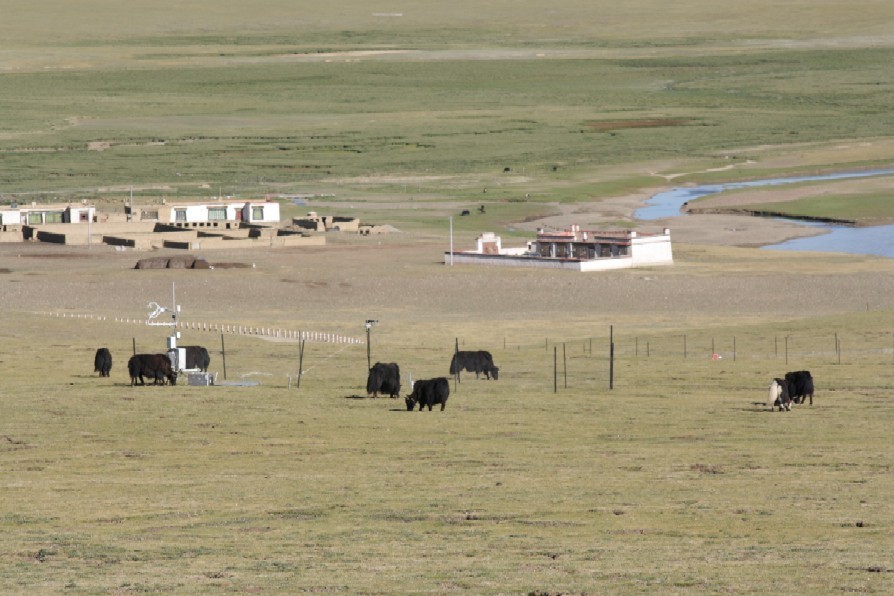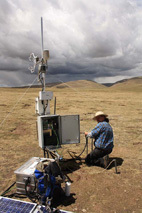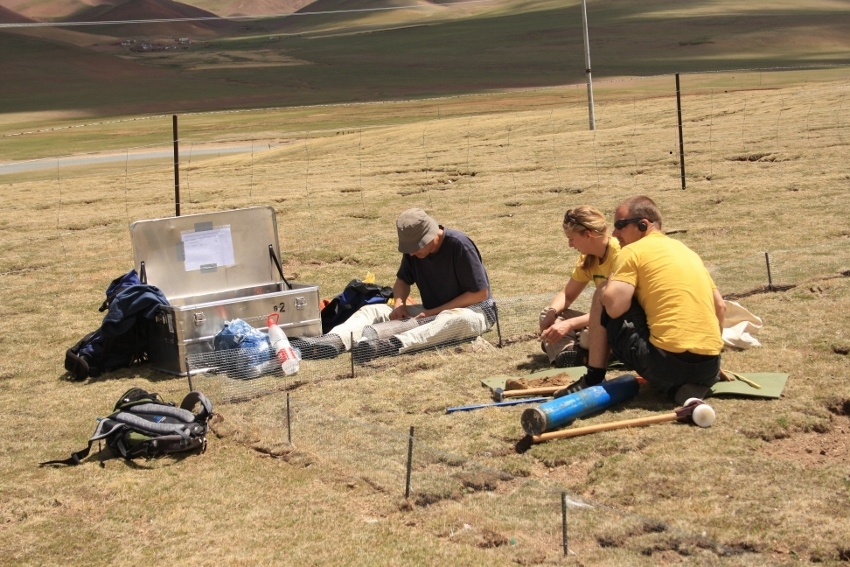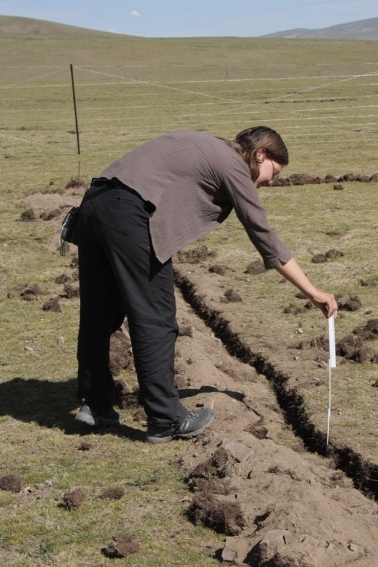Kema
Kobresia Ecosystem Monitoring Area (KEMA) and Naqu Ecological and Environemental Observation and Research Station
The measurement sites are located near to the small village Kema, which is about 40 km in the SE of Nagchu City and 270 km NE of Lhasa. Researchers were based at the "Naqu Ecological and Environmental Obsevation and Research Station" in Kema, which was build during a cooperation between the University of Marburg and Tibet University (TU) and is now run by the TU and the Institute of Tibetan Plateau Research (ITP) form the Chinese Academy of Science (CAS). The sites are located at an altitude of about 4410 m a.s.l. The research area Kema was selected since it lays in the center of the main distribution of Kobresia pygmaea ecosystems, which is the dominant vegetation type on the Tibetan Plateau
The main field site is located on a gentle slope, tilted NNW. On this site an area of 100m by 250m is fenced to exclude the grazing by livestock, mainly Yak but also sheep and goat. Additionally four 15 by 15 meter fences excluding small mammals, mainly the Plateau Pika (Ochotona curzoniae), are set up inside and outside of the big exclosure in order to quantify the impact of different herbivores to the overall grazing effect.The whole ungrazed area is fenced with a one and a half meter high netting wire. At the grazed site a smaller area is fenced just around the eddy-covariance station to protect it of the grazing yaks. Additionally fences were set up on degraded slopes to monitor the recovery of the ecosystem when grazing is excluded. Furthermore grazing exclosure plots were set up in the swamps, close to the river. Due to the minor impact of pika on this vegetation type the setup only contains livestock exclosures and control plots.


The station building in Kema in 2010 now the TU and ITP have build a scound house behind the main Station Building.


The the fenced area and the EC Station (2010) in Kema



Infiltration measurements, instalation of lysimeters and new grazing exclosures in 2010.
Coordinates:
31,27418°N and 92,11037°ERunning projects
| DFG MI 338/7-2; WE 2601/4-2; LE 762/12-2 (SPP1372) | The Making of a Tibetan Landscape: Identification of Parameters, Actors and Dynamics of the Kobresia pygmaea Pastoral Ecosystems: Vegetation Dynamics, Bio-mass Allocation and Water Consumption of Kobresia as a Function of Grazing and Environmental Conditions Coworker: Yongping Yang, Heinz Coners, Elke Seeber, Sandra Willinghöfer, Georg Miehe, Karsten Wesche, Christoph Leuschner |
Finished projects
| DFG Fo 226/18-1,2 (SPP 1372) | Mesoscale circulations and energy and Gas exchange over the Tibetan Plateau Coworker: Tobias Biermann, Wolfgang Babel, Tobias Gerken, Degang Zhou, Johannes Olesch, Jürgen Leonbacher, Kathrin Fuchs, Thomas Foken, Hans-F. Graf, Yaoming Ma, Kun Yang |
| KEMA 2013 | Interdisciplinary Experiment in Kema, Tibetan Plateau Coworker: Ina Hoeft, Maika Holzapfel, Per Schleuss, Klaus Schützenmeister, Elke Seeber, Sandra Spielvogel, Sandra Willinghöfer, Sun Yue, Hermann Ansorge, Georg Guggenberger, Yakov Kuzyakov, Christoph Leuschner, Karsten Wesche, Xingliang Xu |
| WaBaDiS | Water balance under different surface conditions in Kobresia meadow Coworker: Keith Richards, Siyuan He |
Related links:
- Experiment: KEMA 2010: Interdisciplinary Atmosphere Ecosystem Experiment in Kema, Tibetan Plateau
- Experiment: KEMA 2012: Interdisciplinary Atmosphere Ecosystem Experiment in Kema, Tibetan Plateau
- Experiment: KEMA 2013: Interdisciplinary Experiment in Kema, Tibetan Plateau
- Experiment: Xinghai and Kema 2011: Comparative Fertilisation Experiment in the montane belt (Xinghai) and alpine belt (Kema), Tibetan Plateau

